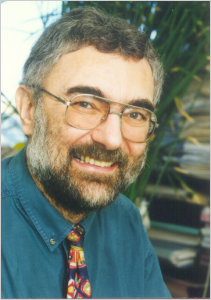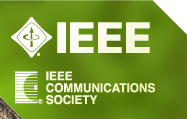Title: Dispensing with Channel Estimation: Near-Capacity Non-coherent Co-located and Distributed MIMO Architectures

L. Hanzo & the Communications Group
School of ECS, University of Southampton, SO17 1BJ, UK,
Tel: +44-23-8059-3125, Fax: +44-23-8059-4508
Email: {lh}@ecs.soton.ac.uk,
http://www-mobile.ecs.soton.ac.uk
Speaker Biography: Lajos Hanzo (
http://www-mobile.ecs.soton.ac.uk) FREng, FIEEE, FIET, DSc received his degree in electronics in 1976 and his doctorate in 1983. During his 34-year career in telecommunications he has held various research and academic posts in Hungary, Germany and the UK. Since 1986 he has been with the School of Electronics and Computer Science, University of Southampton, UK, where he holds the chair in telecommunications. He has co-authored 20 John Wiley - IEEE Press books on mobile radio communications totalling in excess of 10 000 pages, published about 950 research papers and book chapters at IEEE Xplore, acted as TPC Chair of IEEE conferences, presented keynote lectures and been awarded a number of distinctions. Currently he is directing an academic research team, working on a range of research projects in the field of wireless multimedia communications sponsored by industry, the Engineering and Physical Sciences Research Council (EPSRC) UK, the European IST Programme and the Mobile Virtual Centre of Excellence (VCE), UK. He is an enthusiastic supporter of industrial and academic liaison and he offers a range of industrial courses. He is also an IEEE Distinguished Lecturer as well as a Governor of both the IEEE ComSoc and the VTS. He is the Editor-in-Chief of the IEEE Press and a Chaired Prof. also at Tsinghua University, Beijing. For further information on research in progress and associated publications please refer to
http://www-mobile.ecs.soton.ac.uk
The family of recent wireless standards included the optional employment of MIMO tyechniques. This was motivated by the observation that according to the classic Shannon-Hartley law the achievable channel capacity increases logarithmically with the transmit power. By contrast, the MIMO capacity increases linearly with the number of transmit antennas, provided that the number of receive antennas is equal to the number of transmit antennas. With the further proviso that the total transmit power is increased proportionately to the number of transmit antennas, a linear capacity increase is achieved upon increasing the transmit power, which justifies the spectacular success of MIMOs...
However, under realistic propagation conditions, when for example the signals associated with the MIMO elements become correlated owing to shadow fading, the predicted performance gains may substantially erode. Furthermore, owing to the limited dimensions of shirt-pocket-sized handsets the employment of multiple antenna elements at the mobile station is impractical. In this scenario only the family of distributed MIMO elements relying on the cooperation of potentially single-element mobile stations is capable of eliminating the correlation of the signals impinging on the MIMO elements, as it will be discussed in the presentation. Finally, we will report on a variety of avantgarde hybrid MIMO designs to set out promising future research directions.
Nonetheless, the family of distributed MIMOs has its own design challenges. Firstly, it may be unrealistic to expect that the shirt-pocket-sized handsets can afford estimating not only their own the channels, but also those of the other links supported for example with the aid of relaying. Hence low-complexity non-coherent detection aided distributed MIMOs have to be designed. However, they tend to exhibit an error-floor at high Doppler frequencies. We mitigate this performance erosion with the aid sophisticated multiple-symbol detection techniques. Regretfully, they exhibit an exponentially increasing complexity as a function of the detection-window size. The escalating complexity is then mitigated with the aid of a novel differential sphere detector without compromizing the attainable performance.
The above-mentioned avantgarde designs indeed, attain an attractive performance versus complexity trade-off, albeit they also require sophisticated distributed channel codes, in order to mitigate or entirely eliminate any relay-induced error propagation. These distributed MIMOs also require the redefinition of the classic wireless resource-allocation techniques. Hence their power-control, relay-appointment and relay-activation procedures, their synchronization and a range of other sophisticated solutions as well as a list of open problems will conclude this review.
Acknowledgement: The insightful contributions of my valued colleagues and co-authors at Southampton University are gratefully acknowledged.
Back to the home page >>







